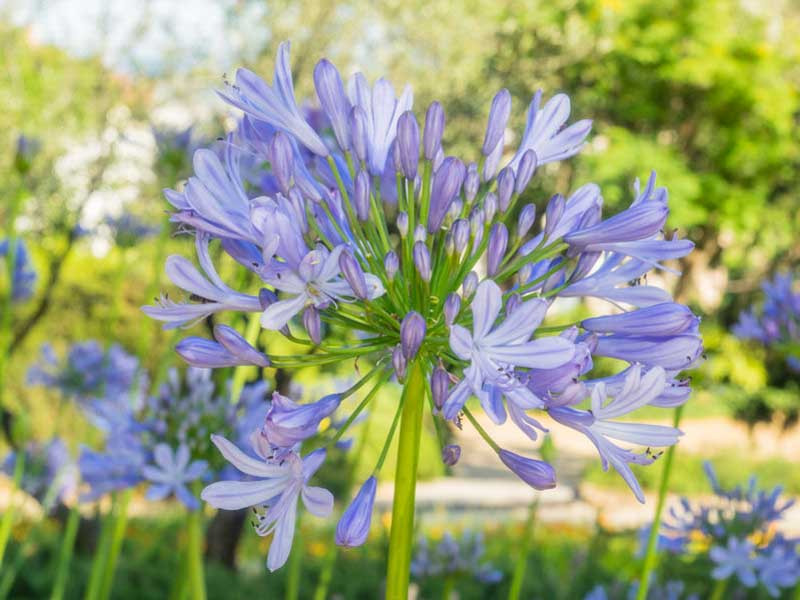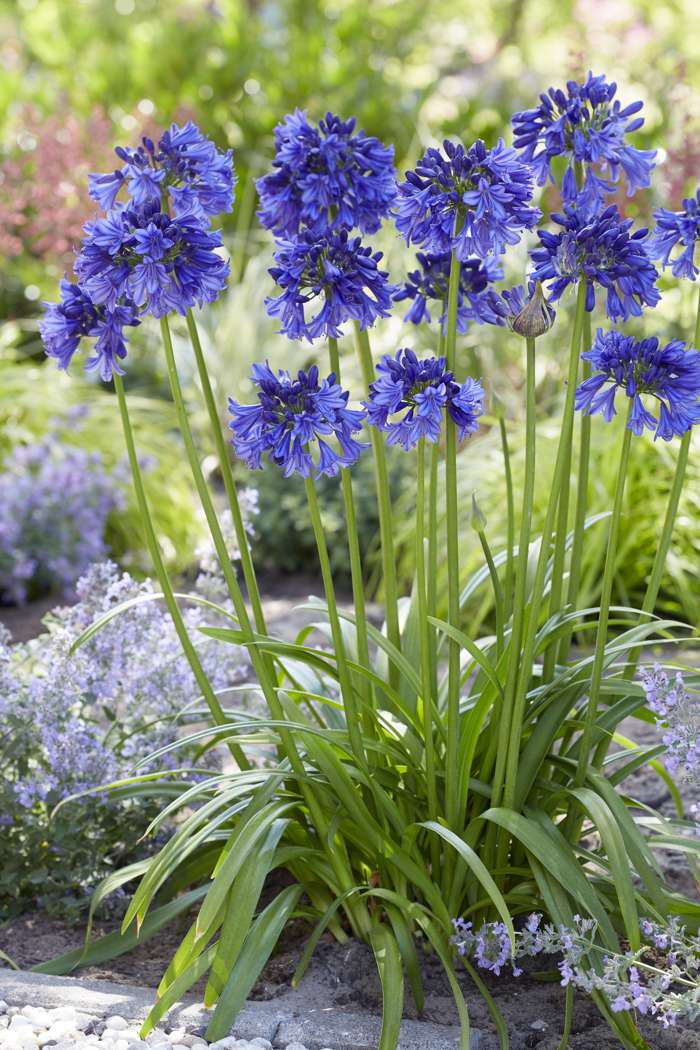Just how to Plant and Maintain Agapanthus in Your Yard
Just how to Plant and Maintain Agapanthus in Your Yard
Blog Article
Mastering the Art of Agapanthus Treatment: Important Actions for Healthy And Balanced Growth and Vibrant Blossoms
In the world of cultivation, the growing of agapanthus stands as a rewarding venture for those that seek to nurture these elegant flowering plants. With their striking blooms and graceful foliage, agapanthus has recorded the focus of gardeners worldwide. However, attaining optimum growth and vibrant blooms needs a nuanced technique that includes different necessary actions. From picking the ideal selection to understanding pruning techniques, the journey towards growing prospering agapanthus plants is multifaceted and holds the essential to unlocking the complete possibility of these botanical gems.

Picking the Right Agapanthus Range

When selecting the appropriate Agapanthus selection for your yard, consider variables such as climate suitability, bloom shade, and growth behavior. Additionally, consider the environment in your region to make sure the Agapanthus selection you pick can prosper in your specific conditions. Recognizing the development practice of various Agapanthus varieties is vital for proper positioning within your garden.
Perfect Growing Problems
Taking into consideration the ideal environmental requirements is vital for successful Agapanthus farming. Agapanthus grows in well-draining soil with a somewhat acidic to neutral pH degree. When planting, select a location that gets full sunlight to partial shade. In hotter climates, giving some mid-day color can prevent scorching of the leaves. Agapanthus plants are sensitive to chilly temperatures and should be secured from frost throughout winter season months.
To guarantee healthy growth and dynamic blooms, plant Agapanthus bulbs at a depth of about 2-4 inches and space them 8-12 inches apart. Including raw material, such as compost, to the soil can enhance drain and fertility, promoting robust root growth. Mulching around the base of the plants assists keep moisture and subdues weed development. Regular watering is essential, particularly during the growing period, to keep the dirt constantly damp but not saturated.
Watering and Feeding Tips
Maintaining correct wetness degrees and supplying necessary nutrients are crucial elements in the treatment program for Agapanthus plants. It is critical to strike an equilibrium when it comes to sprinkling Agapanthus. If overwatered, these plants prefer continually wet soil however are prone to root rot. During the expanding period, water deeply once a week, making certain the soil is well-draining to avoid waterlogging. In hotter environments or during periods of drought, more regular watering may be needed to maintain the dirt evenly moist. Nonetheless, reduce click over here now watering in the winter months to avoid waterlogged conditions.
Feeding Agapanthus is necessary for promoting healthy growth and prolific blooms. Apply a balanced plant food, such as a 10-10-10 formula, in the very early spring as new growth arises. Repeat this application every 6-8 weeks throughout the growing season. Avoid extreme fertilization, as it can result in rich vegetation at the expenditure of blossoms. Constantly comply with the maker's guidelines for correct dilution and application approaches. By adhering to these watering and fertilizing suggestions, you can ensure your Agapanthus plants flourish and create vibrant, lasting flowers.
Pruning Techniques for Agapanthus
Trimming Agapanthus plants at the ideal times and with correct methods is vital for preserving their health and wellness and promoting optimum development and blooming. The suitable time to prune Agapanthus is in late wintertime or early spring prior to new growth emerges. Beginning by eliminating any type of dead or yellowing fallen leaves near the base of the plant. Cut them as close to the ground as possible without harming the emerging shoots.
Deadheading spent flowers can additionally redirect the plant's energy into producing even more blossoms instead than setting seeds. If you want to accumulate seeds for breeding, leave some flowers to dry and mature on the plant.
Bear in mind to make use of tidy, sharp devices to make precise cuts and decrease the threat of introducing diseases. Agapanthus. Regular pruning will help maintain your Agapanthus looking cool and healthy and balanced while making sure an abundant screen of lovely flowers
Taking Care Of Common Pests and Conditions
After ensuring appropriate trimming techniques for Agapanthus, it is important to address common insects and diseases that can affect the health and wellness and vitality of these plants. One typical insect that influences Agapanthus is the Agapanthus gall midget.
Furthermore, Agapanthus plants can suffer from root rot if they are grown in inadequately draining pipes soil. By being cautious and taking punctual action versus insects and conditions, you can aid your Agapanthus plants thrive and create vivid flowers. Agapanthus.

Final Thought
Finally, understanding the art of agapanthus treatment entails selecting the appropriate range, giving excellent growing problems, appropriate watering and feeding, appropriate pruning techniques, and addressing common parasites and conditions. By following these vital steps, you can ensure healthy development and lively blossoms for you could check here your agapanthus plants. Bear in mind to routinely keep an eye on and maintain your plants to advertise their general wellness and durability.
To guarantee healthy growth and vibrant blossoms, plant Agapanthus light bulbs at a depth of about 2-4 inches and room them 8-12 inches apart. By complying with these watering and fertilizing suggestions, you can guarantee your Agapanthus plants thrive and generate lively, lasting blossoms.
One usual insect that impacts Agapanthus is the Agapanthus gall midget. In addition, Agapanthus plants can suffer from root rot if they are grown in badly draining soil. By adhering to these necessary actions, you can make certain healthy and balanced growth and vivid flowers for your useful link agapanthus plants.
Report this page